Get the slide deck! Request the slides from Sarah's presentation "Workforce Empowerment During a Skilled Labor Crisis" at Bisnow's DICE East Conference at the bottom of this page.
From construction teams, to operations and everyone in between, there’s not enough experienced people to fill the open positions in the data center industry. Everyone is struggling to figure out how to leverage the experienced staff they have while widening the hiring pool to bring on new people. And all without taking a hit to quality and productivity.
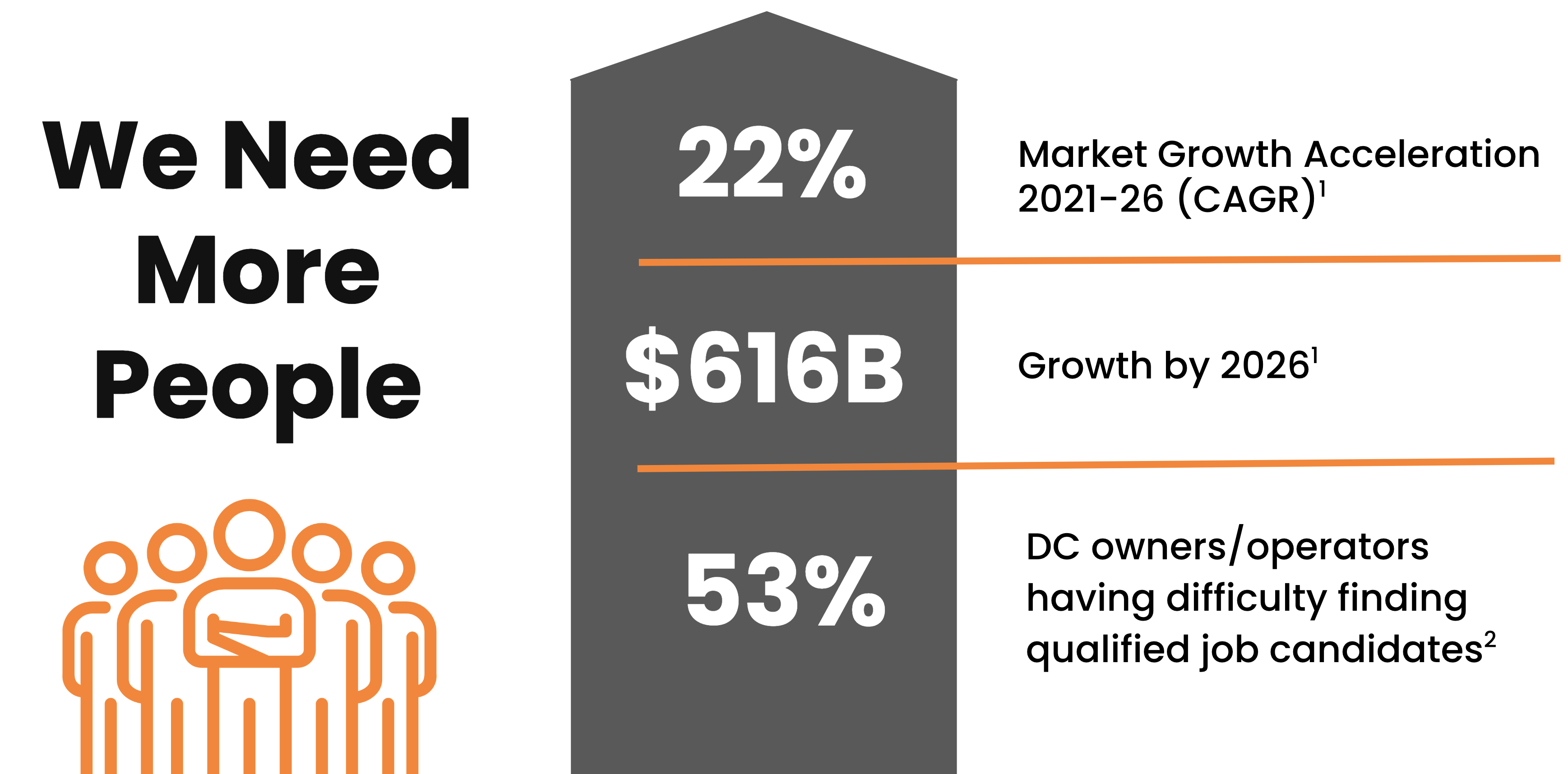
The Skilled Labor Challenge
For all of us making a living in the industry, the good news is the market is positioned to grow over $616 billion by 2026 (CAGR) with a 22% acceleration rate. The bad news is 53% of owner/operators are having difficulty finding qualified people to fill their open positions today. To meet this growing demand, we’re going to be forced to hire people that are not as experienced as we’d prefer.
Making things worse for operations, the workload rate will increase more dramatically than the staffing rate. At some point, staffing will plateau as workload continues to rise, which is natural, but exponentially more difficult to manage during a skilled labor shortage.
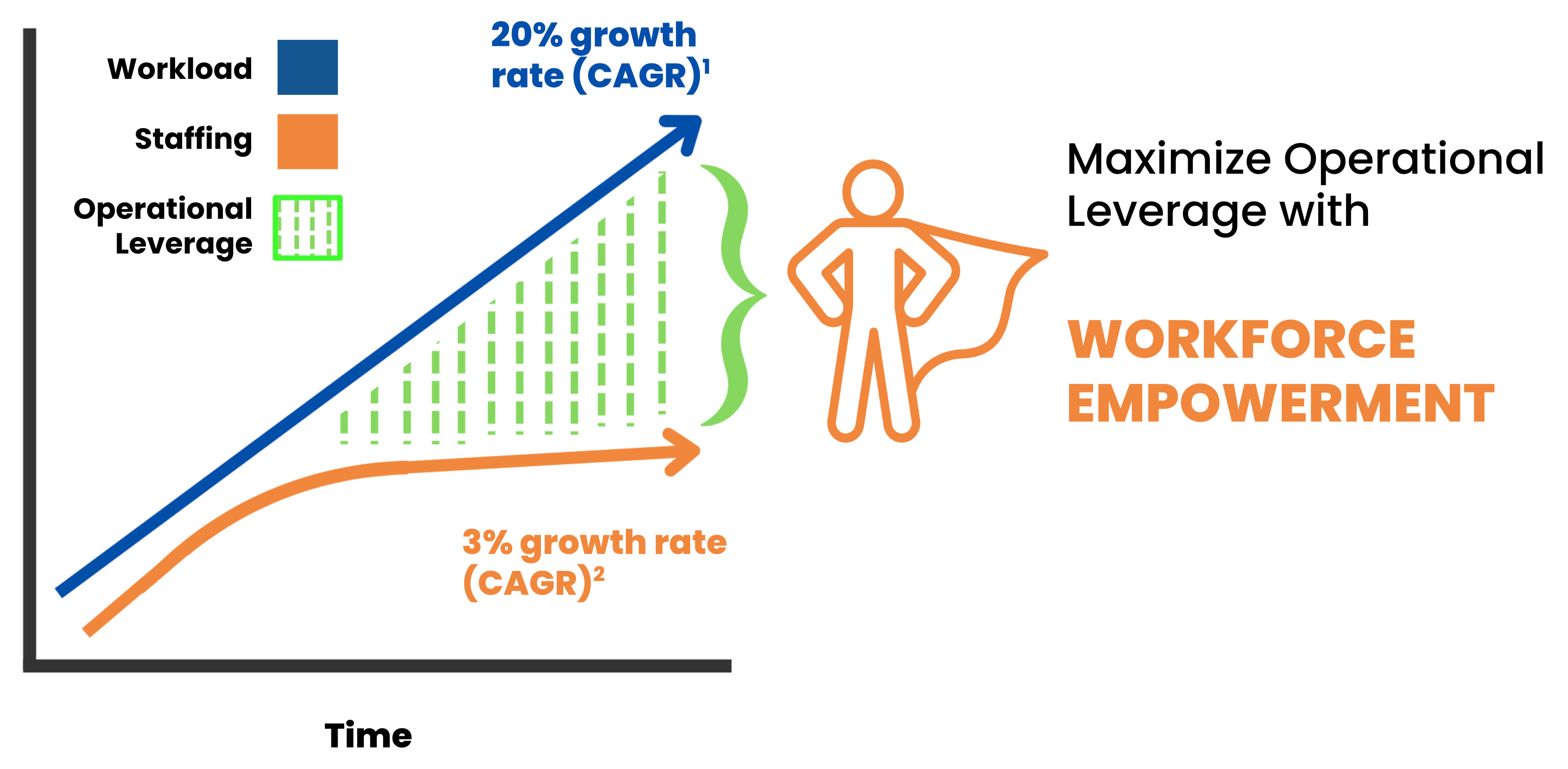
However, the area in between is our opportunity for operational leverage. During a skilled labor crisis, this needs to be maximized to its fullest potential in order to scale successfully and maintain standards. Empowering both your experienced personnel to pass on the knowledge they have and your new greener personnel with tools to apply that knowledge will be the key to success during this intense industry growing pain.
Operational Leverage: Empower the Workforce
So how do we actually empower our workforce? What needs to happen?
Three key elements:
- Provide strong training and onboarding materials
- Widen the hiring pool to accept less experienced people by giving them what they need to know during training.
- Remove the ambiguity
- Clear instruction with complete information is how people execute with precision and accuracy on the job.
- Establish absolute operational clarity
- Everyone needs visibility and clarity upstream and down to scale successfully.
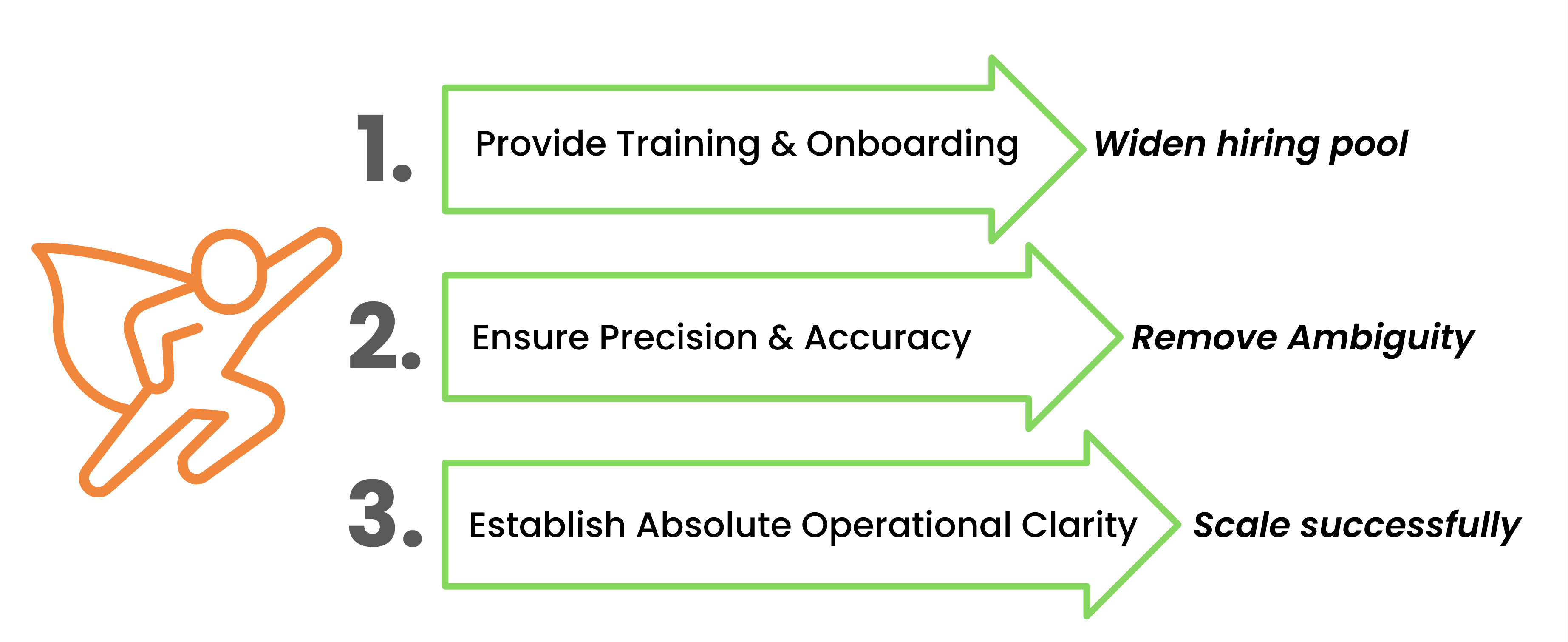
Of course, like anything in operations, it’s easier said than done! Let’s look at a few examples of who is this really well so we can learn as much as possible, starting with the US military.
US Military: Empower the Workforce
The US military does a fantastic job of training and onboarding, executing with precision and accuracy, and establishing operational clarity. Last year the Army recruited over 45,000 people and the Navy recruited over 33,000 as examples.
More importantly, the military does not require experience or higher education. They have no concern for lack of experience since they’ll provide everything you need during training.
Instead, the military will onboard a very large subset of vastly diverse people, from a wide range of backgrounds, with no experience, and no education. They put them through 10 weeks of basic or boot camp and produce thousands of consistent, aligned, and effective personnel.
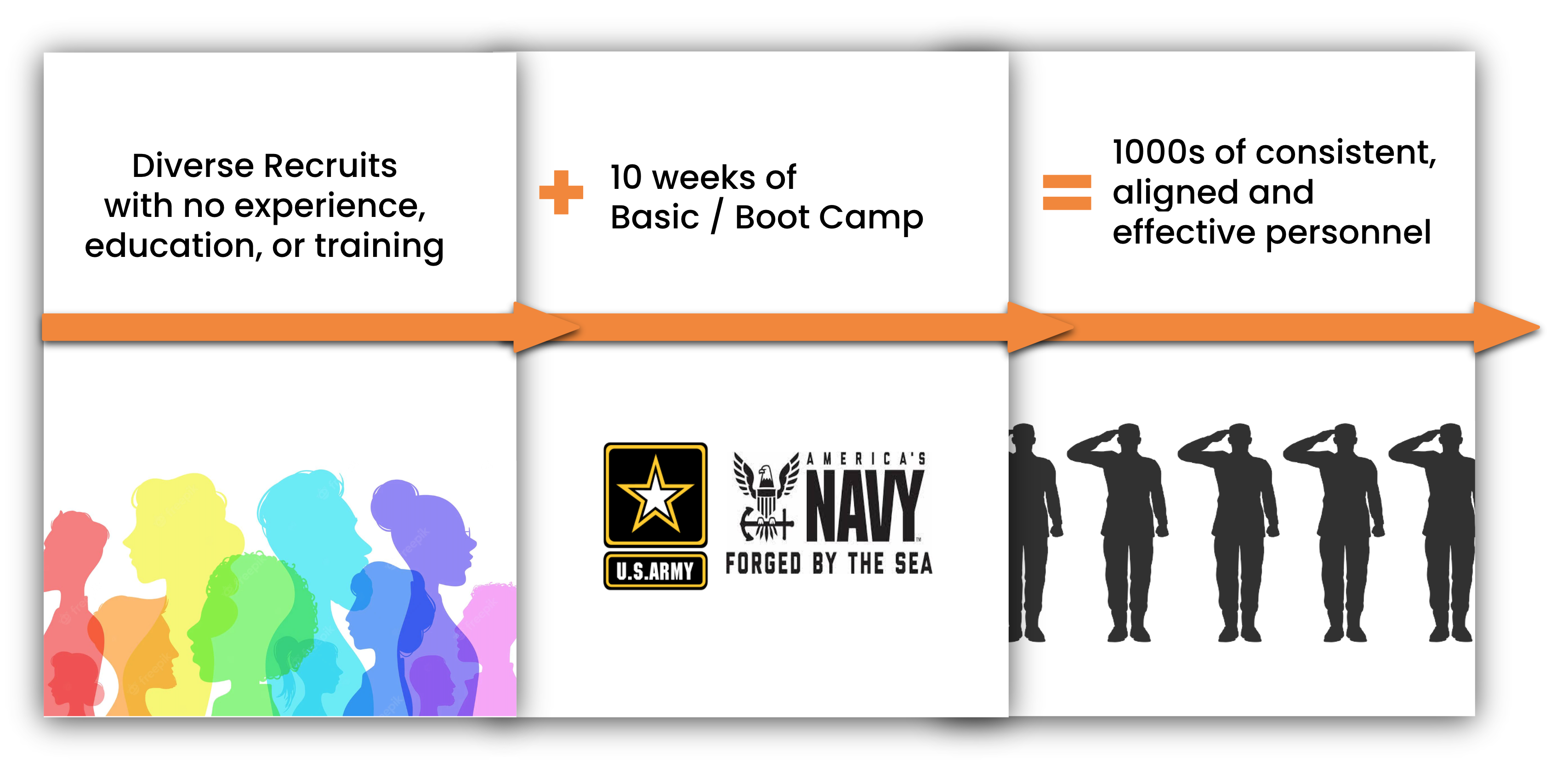
Now consider this: the military takes very young, inexperienced, uneducated people and in a matter of weeks gives them war weapons to operate and we as a nation don’t bat an eye. In fact, we trust that process enough to defend our country. We, as the data center industry, need to look at this process through a labor lens to see how the military has become a master at unlocking a labor pool.
US Military: How do they do it?
The military removes all ambiguity from every task by relying heavily on training and checklists. From the clothes you wear, to what and when you eat, to arms training and combat, the military removes any questions around what you're doing, exactly how you're doing it, and when it’s done. There is clarity and detail in every step of every task.
To be clear, we can’t turn our data centers into military style boot camps, but we can apply some of the strategy when it comes to operational leverage and workforce empowerment.
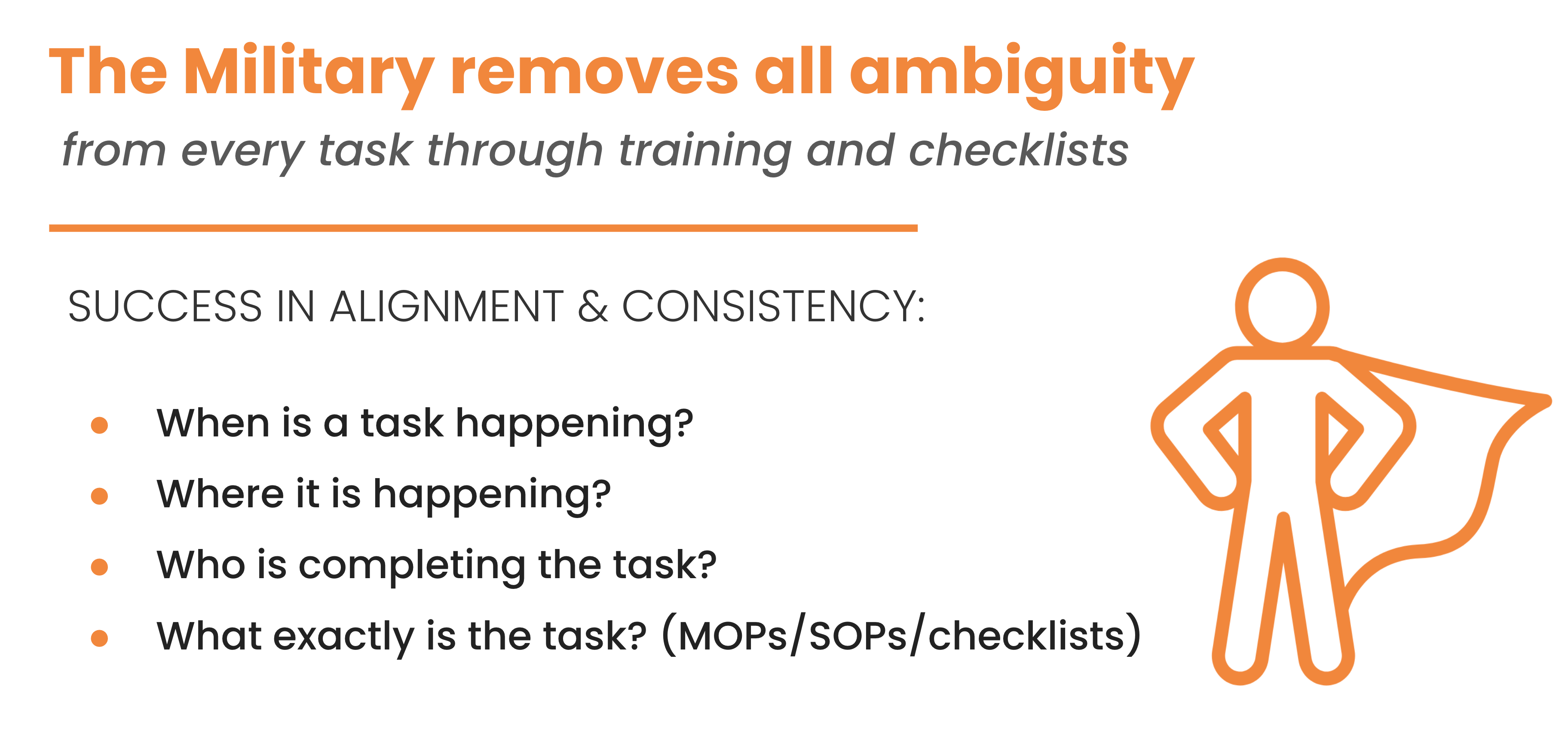
Uber: Empower the Workforce
Since the military might be an extreme example, let's look at another one in the private sector: Uber. Uber excels at unlocking a hiring pool, ensuring precision and accuracy, and establishing absolute operational clarity for both the driver and the rider.
In 2021, Uber brought on 640,00 new drivers in one year. Today, there are 3.9 million active Uber drivers in the world. Unlike the requirements to become a taxi driver, Uber drivers do not need to obtain a speciality license (in most cases) per the city they’re driving in. Nor do Uber drivers need to pay specific city or state taxi fees, or require taxi schooling. They don’t even need to speak fluent English.
Instead, Uber will take a very large subset of vastly diverse people, from a wide range of backgrounds, with no need for experience or education, give them the Uber app and produce millions of aligned and effective taxi drivers.
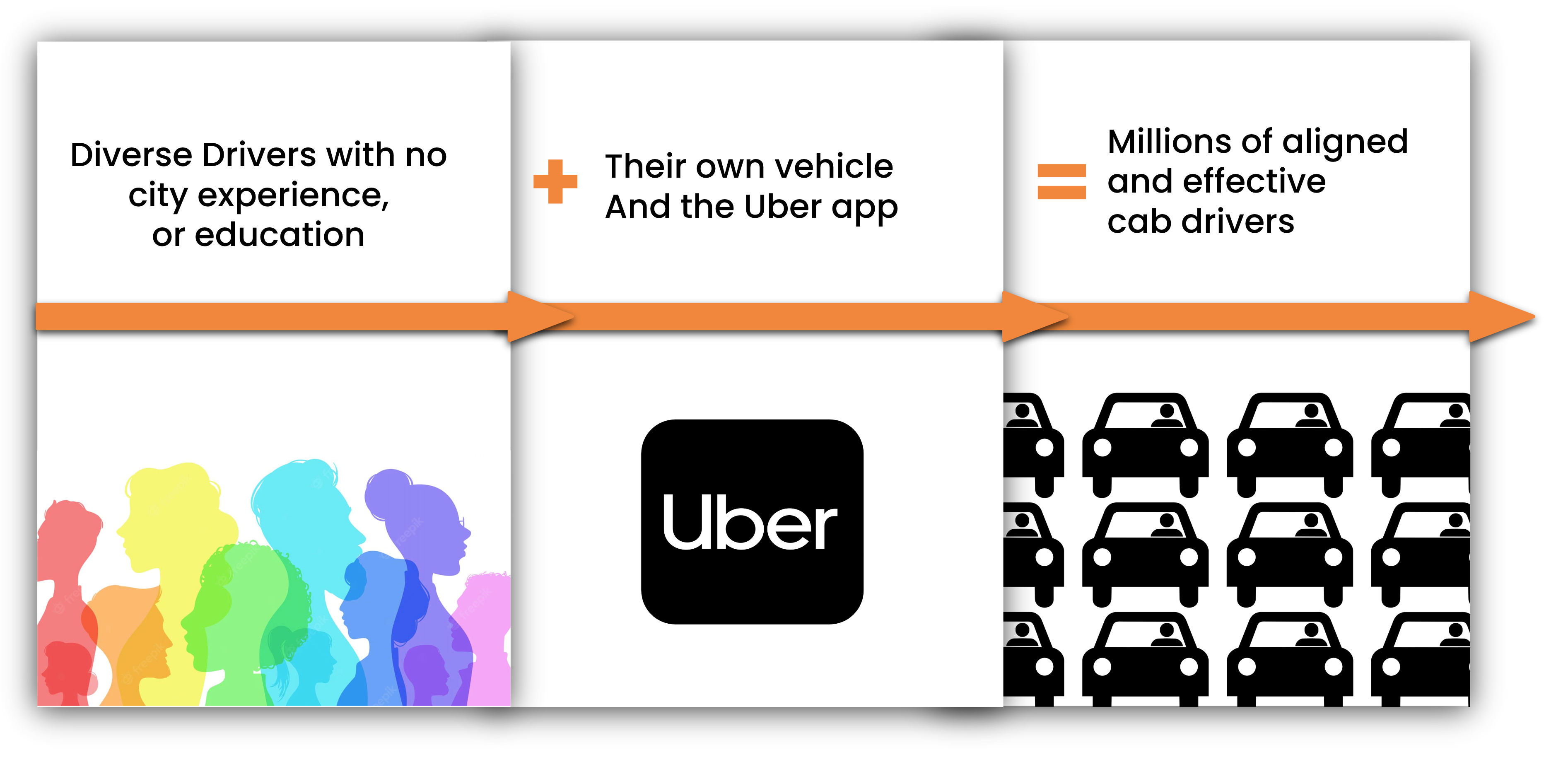
Uber: How do they do it?
Uber came along and totally flipped the taxi industry upside down - a true disruptor.
Uber removes ALL ambiguity from the task for both the rider and the driver using a centralized solution... the Uber app.
The who, what, when and where of each task is very clearly aligned in the Uber app for both the rider, and the driver. In fact, there’s so much operational clarity within this app, that we inherently trust our Uber is coming to pick us up exactly when it says it is, despite the potential lack of experience or education of the driver.
That driver may have just moved to the city and not even speak your language, but the Uber app will provide him or her step by step exactly what to do, when to do it, who they’re picking up, and where. Uber has empowered their drivers to get a job done precisely and accurately down to the minute.
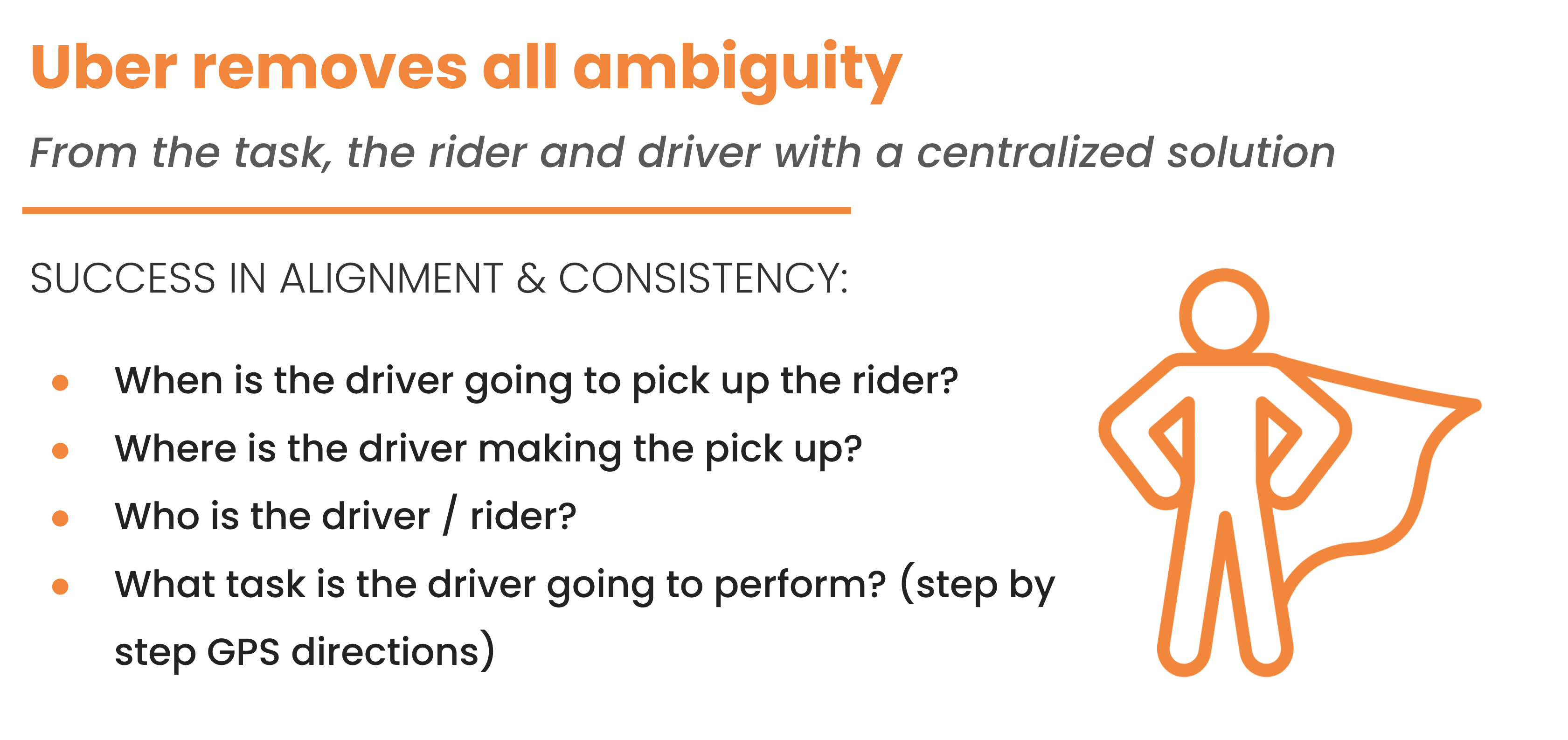
Data Center Industry Challenge
Uber and the US Military are two strong examples of scaling successfully with a wide hiring pool of basically anyone. They both ensure so much precision and accuracy that you and I trust their process without thinking about it.
When it comes to scaling the staff in the data century industry, this Uptime Institute chart shows our projected staffing needs through 2025, which are about 190,000 new hires globally:
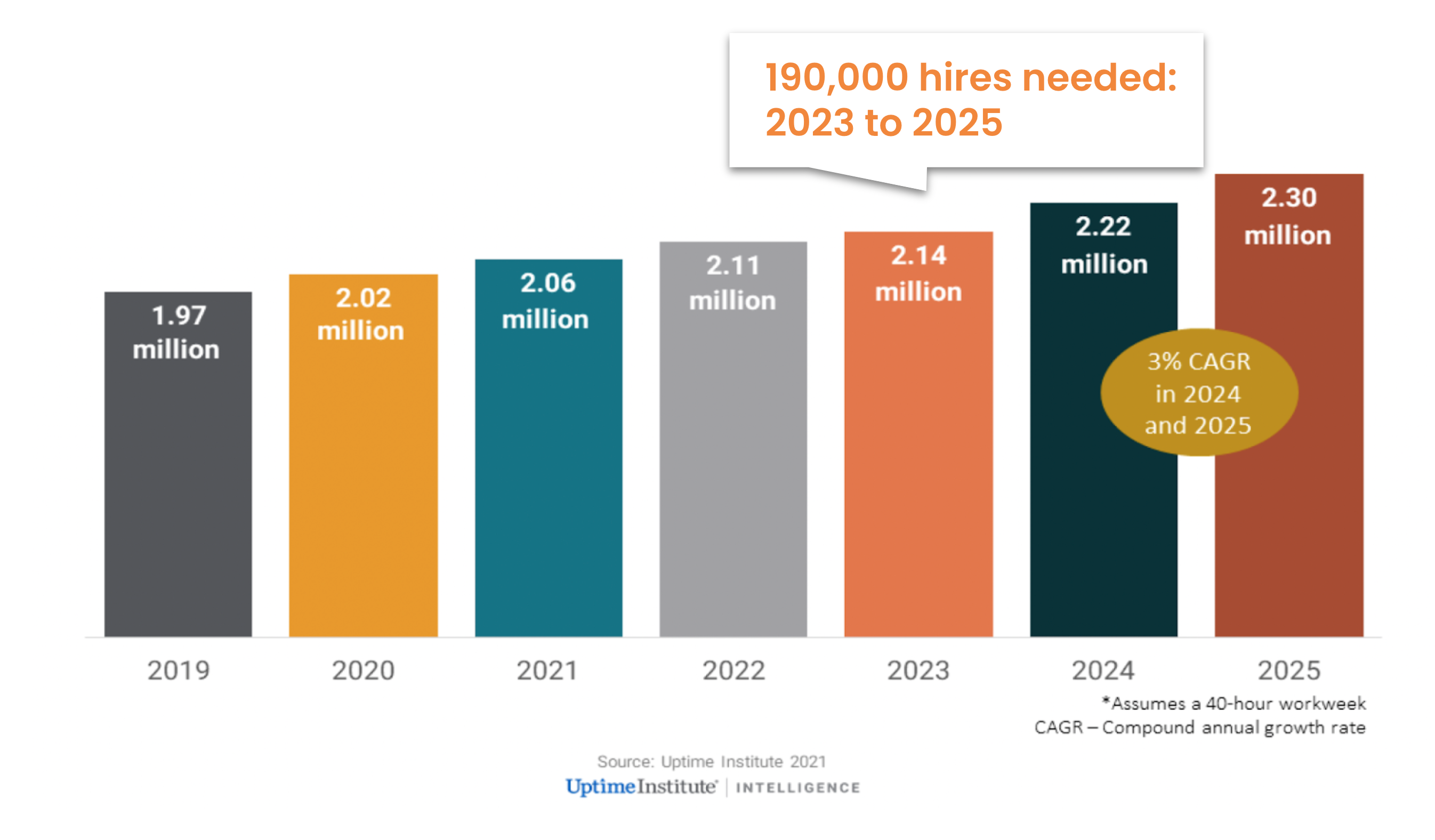
North America will need to hire a little under 20,000 people per year through 2025. That’s a fraction of what the Army, Navy and Air force have done, and a mere smidgen of what Uber can do in a year. All with much less skilled labor. And don't forget, over half of our industry is already struggling with hiring today.
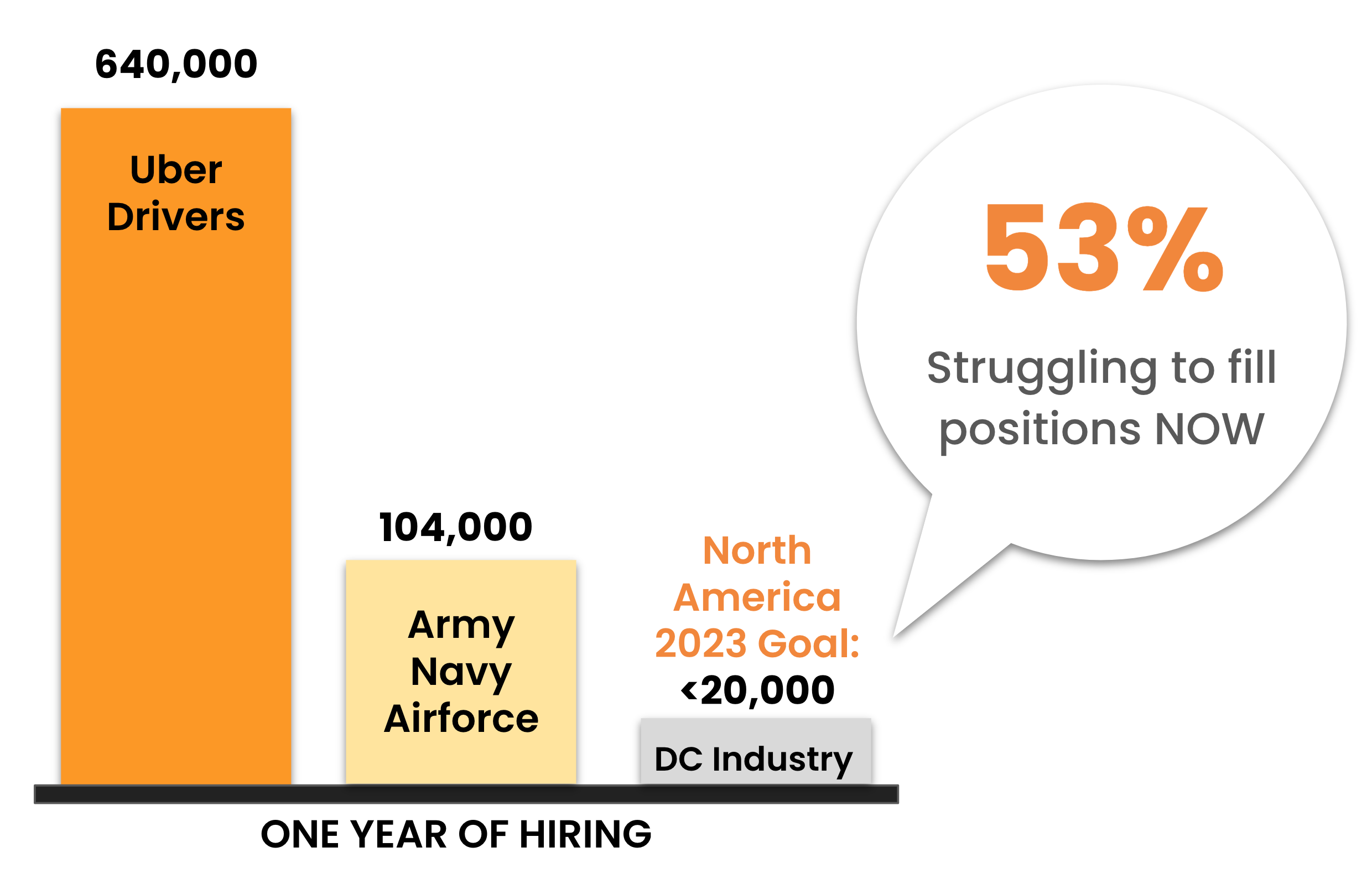
Workforce Empowerment
So why are we struggling so badly with widening the hiring pool and what can we learn from our two examples? In summary, we're lacking workforce empowerment. It's the key to turning inexperienced people into productive, consistent personnel in both of our examples.
How can we get a better grip on mastering this, or at least close the gap as much as possible between where we are now and where Uber and the US Military are on workforce empowerment?
Aligning the Essentials
The common denominator in both examples is this: aligning the essentials. Anyone anywhere in the world running operations is striving to align these 4 pillars:
- Who is doing the work?
- What exactly are they doing?
- When are they doing it
- And Where is it happening?

But what does this look like in a data centers today? First of all, the Operations of a data Center is no taxi service. Ops teams need to manage preventative maintenance, vendor teams, rounds, SLA compliance, the creation and revisions of MOPs/SOPs, and other procedures. They need to schedule and track all work, work orders, tickets, etc. Additionally, and with growing importance, they need to train and onboard all their new hires.
How is all this centrally managed, controlled and communicated today? Are the essentials being aligned for all of these tasks to remove as much ambiguity as possible?
The Hodgepodge of Operations Tools
Unfortunately, there’s no standard to manage these things, so every team has their own hodgepodge of tools that looks something like a mix of softwares, excel sheets, Word docs, PDFs, comms tools like Outlook and texting, and sometimes clipboards and white boards. These various tools, that are mostly not talking to each other, allow for way too much ambiguity for teams. This is what leads to missing data, incorrect data, delays, human error, and the dreaded downtime.
Centralize to Scale
However if you can centralize as many of these tools as possible and effectively align the who, what, when and where from a single solution, you will remove ambiguity, increase clarity, and consistency which makes scaling infinitely smoother.
When you align operational essentials in detail from a centralized solution, the result is more connected and visible Operations. This delivers the absolute operational clarity necessary to maximize workforce empowerment. Teams will have the tools to execute with precision and accuracy.
How to Make it Happen
When it comes to the 3 key elements of Workforce Empowerment, below is a breakdown of possibilities to make them happen:
Widen the hiring pool to accept less experienced people:
-
- Create a strong onboarding/training program internally using the knowledge from your experienced team members.
- Partner with local schools that provide Data Center Operations programs for internships.
- Promote retention with an internal hierarchy of training programs for people to continue learning and achieving additional qualifications.
Remove the ambiguity with clear instruction and understanding:
-
- Digitize MOPs, SOPS and procedures to create more control around steps and embed video and photos for instruction.
- Leverage experienced staff by having them create procedures and instructions videos/photos.
- Communicate the 4 operational essentials with all information required to complete the work.
Establish absolute operational clarity:
-
- Consolidate as many tools as possible to increase clarity and efficiency in operations.
- Integrate remaining tools to maximize visibility, metrics, and optimize decision making.
- Digitize rounds and other procedures to automatically gather data that can be tracked and used for trends.
In Summary
The data center industry is certainly not the US Military or Uber, but given our growth rate and staffing circumstance, we don’t have a choice but to learn and apply what we can from these examples to maximize operational leverage. The criticality of the next few years will be in how we empower our experienced staff to distribute their knowledge while enabling the incoming wave of less experienced staff with the tools they need to successfully run our data centers. The growth of our industry is inevitable, and we’ll need to be ready to empower our workforce.
Get the slide deck from Sarah's presentation "Workforce Empowerment During a Skilled Labor Crisis" at Bisnow's DICE East Conference:
.png?width=1500&height=535&name=Chekhub%20Gray%20Tagline%20(2).png)
.png?width=100&height=100&name=Untitled%20design%20(7).png)